Cracking a slab can seem like a daunting task, especially if you’re not familiar with the process. However, it can be done with the right tools and techniques. In this blog post, we’ll provide you with a comprehensive guide on how to crack a slab with ease. Whether you’re a DIY enthusiast or a professional, this guide will help you finish the job in no time.
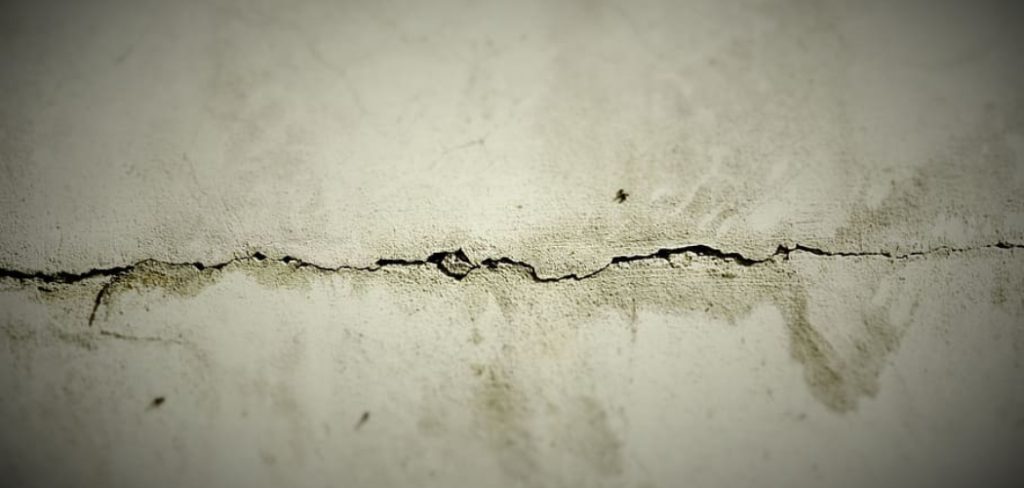
Can You Crack a Slab?
Have you ever wondered if you can crack a slab by yourself? If the thought has ever crossed your mind, then you’re certainly not alone. Many DIY enthusiasts dream of testing their skills and seeing what they’re capable of when it comes to concrete.
However, it’s important to note that cracking a slab is no easy feat, and attempting to do so without the proper know-how or equipment could result in serious injury or property damage. So, while the idea of cracking a slab might sound appealing, leaving it to the professionals is always best.
Why Should You Crack a Slab?
Cracking a slab may sound counterintuitive to maintaining the integrity of your home, but it is an important preventative measure to take. Concrete slabs, like those found in basements or garages, are subject to shifting and settling over time, which can lead to cracks.
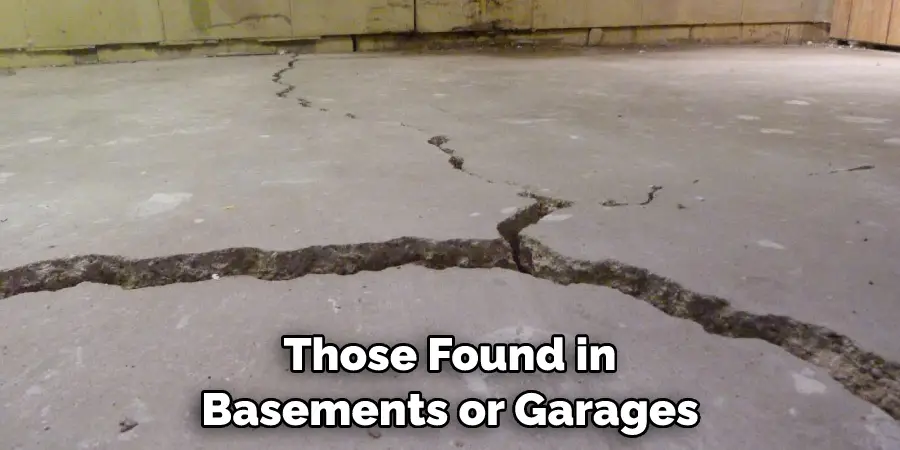
These cracks can allow moisture, insects, and other unwanted elements to seep in, causing damage to your property. By intentionally cracking the slab, you create control joints that help relieve the stress of shifting and settling, preventing larger, more damaging cracks from forming. So while it may seem strange to purposely damage your foundation, it’s a proactive step that can pay off in the long run.
How to Crack a Slab with Ease: A Complete Guide
1. Understanding the Types of Concrete
The first step in cracking a slab is to know what type of concrete you’re working with. Concrete can be either reinforced or unreinforced, and each type requires a different approach.
Reinforced concrete has steel bars inside, while unreinforced concrete does not. If you’re working with an unreinforced concrete slab, you can use a sledgehammer to break it up. However, if you’re working with a reinforced slab, you’ll need a jackhammer.
2. Preparing the Area
Before you start cracking the slab, you need to prepare the area. Remove any obstructions, such as rocks or debris. If you’re working with a reinforced concrete slab, mark the position of the steel rods so that you don’t damage them during the cracking process. Also, put on safety gear like gloves, goggles, and earplugs.
3. Using a Jackhammer
A jackhammer is a powerful tool that can quickly break up a reinforced concrete slab. Begin by chiseling a line around the perimeter of the slab. Then, using the jackhammer, work from the outside in, breaking the concrete into manageable pieces.
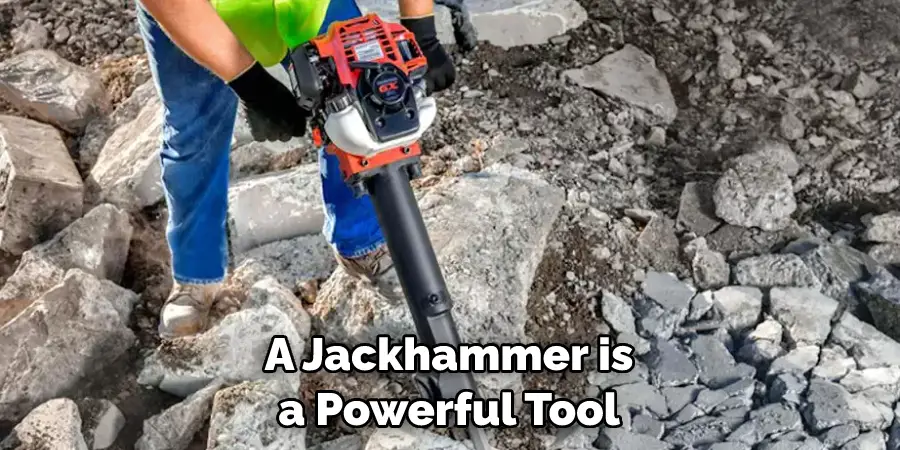
Rest the jackhammer on the surface and allow it to do the work rather than using excessive force. This will reduce the risk of injury and improve the efficiency of the job.
4. Using a Sledgehammer
If you’re working with an unreinforced concrete slab, you can use a sledgehammer to break it up. Begin by striking the concrete at its weakest point, usually at the edge. Work your way toward the slab’s center, breaking it into smaller, more manageable pieces. Be sure to wear gloves to protect your hands from the shock of the sledgehammer.
5. Removing the Debris
Once you’ve broken up the slab, it’s time to remove all the debris. Be sure to dispose of any hazardous waste safely and properly. You can use a shovel or a skid-steer loader to scoop up the pieces and haul them off.
6. Smoothing out The Surface
You can begin smoothing the surface after all the debris has been cleared away. Use a concrete saw to cut into the slab and make it level. You might also need a trowel or other tools to finish the job.
7. Sealing the Cracks
Once you’ve completed these steps, sealing any cracks or joints in the concrete is important. This will ensure that no water can get in and cause further damage to the slab. You can use caulking, epoxy, or other sealants for this step.
Following these steps will ensure your job goes smoothly and quickly when cracking a slab! With proper preparation and care, you can break up any concrete safely and efficiently.
5 Considerations Things When You Need to Crack a Slab
1. Location of the Slab
When you need to crack a slab, one of the most important considerations is the location of the slab. The location will determine what type of tools and materials you will need to complete the job.
For example, if the slab is located in an area with limited access, then you may need to use specialized tools such as a jackhammer or saws-all. On the other hand, if the slab is in an open area where you can easily access it, you may be able to use more traditional tools such as a sledgehammer or chisel.
2. Size and Thickness of the Slab
The size and thickness of the slab are also important factors when deciding how to crack it. If the slab is large and thick, you may need to use more powerful tools such as a jackhammer or saws-all. On the other hand, if the slab is small and thin, you may use more traditional tools such as a sledgehammer or chisel.
3. Type of Material Used for Slab
The type of material used for constructing the slab will also influence your approach when cracking it. If concrete is used for constructing the slab, you will likely need a jackhammer or saws-all due to its strength and durability. However, if the wood is used for constructing the slab, you may be able to use more traditional tools such as a sledgehammer or chisel due to its relative fragility compared with concrete slabs.
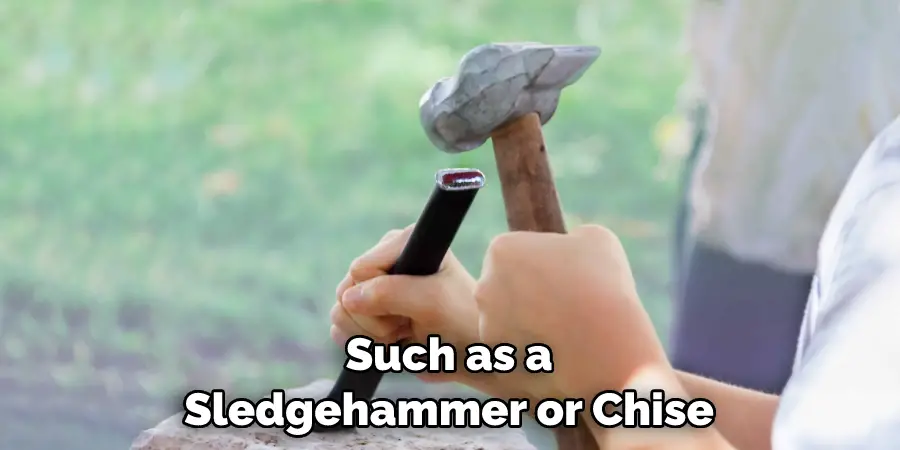
4. Safety Considerations
When attempting any demolition work, it is important to consider safety precautions to prevent injury or damage from occurring during your work process.
This includes wearing protective clothing such as goggles and gloves when using power tools; ensuring all bystanders are kept at a safe distance away from flying debris; and properly disposing of any hazardous materials resulting from your work process (e.g., dust particles).
5. Disposal Options
Finally, when attempting any demolition work, it’s important to consider what disposal options are available for any debris that results from your work process (e.g., broken pieces of concrete).
Depending on where you live, there may be local regulations regarding how demolition waste should be disposed of, so make sure that you are aware of these before beginning your project so that everything can be disposed of correctly once your job has been completed successfully!
Benefits of Crack a Slab
Crack a Slab is a revolutionary product designed to eliminate the trouble that comes with cracked concrete slabs. The benefits of Crack a Slab cannot be overstated, as it offers a long-lasting solution that saves money and time. The product is incredibly easy to use, and the application requires no special training or equipment.
By filling the gap under the slab, Crack a Slab makes the surface even and flat, removing the need for costly repairs. Additionally, the product is environmentally friendly and does not contain harmful chemicals. If you want to extend your concrete’s life and avoid costly repairs, Crack a Slab is definitely worth considering.
Some Common Mistakes People Make When Trying to Crack a Slab
Trying to crack a slab can be daunting, especially if it’s your first attempt. However, it’s important to be cautious and avoid some common mistakes people make in this situation. One of the most common mistakes people make when trying to crack a slab is using the wrong tools. Always make sure to use tools that are specifically designed for the type of slab you’re working on.
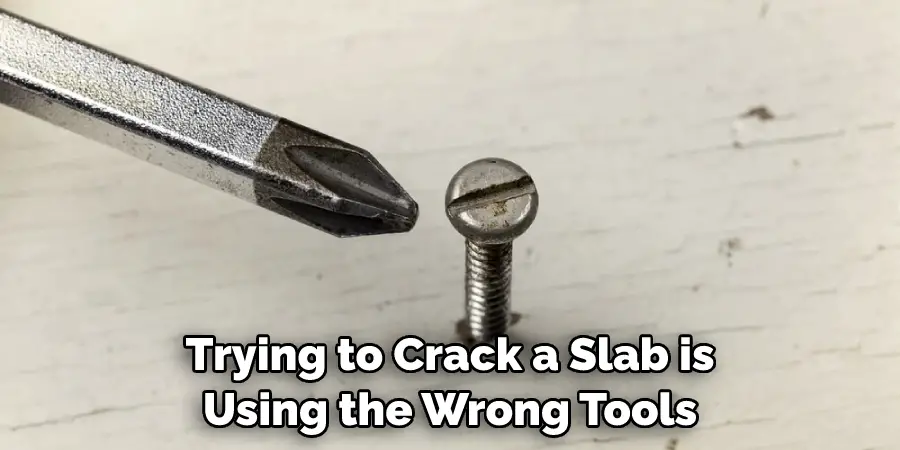
Another mistake people make is failing to measure the area they need to crack properly. This can lead to imperfect cracks or even cause further damage to the slab. Lastly, it’s important to wear appropriate safety gear, such as goggles and gloves, when attempting to crack a slab. Remember, taking your time and being cautious can save you from making costly mistakes in the long run.
Conclusion
Cracking a slab can be a challenging task, but if you follow these steps, it doesn’t have to be. Whether you’re working on a DIY project or as a professional, understanding the type of concrete you’re working with, preparing the area, using the right tools, and cleaning up properly can make the process a lot easier.
So, if you’re looking to crack a slab, follow these tips, and you’ll be done in no time. Thanks for reading our post about how to crack a slab.
